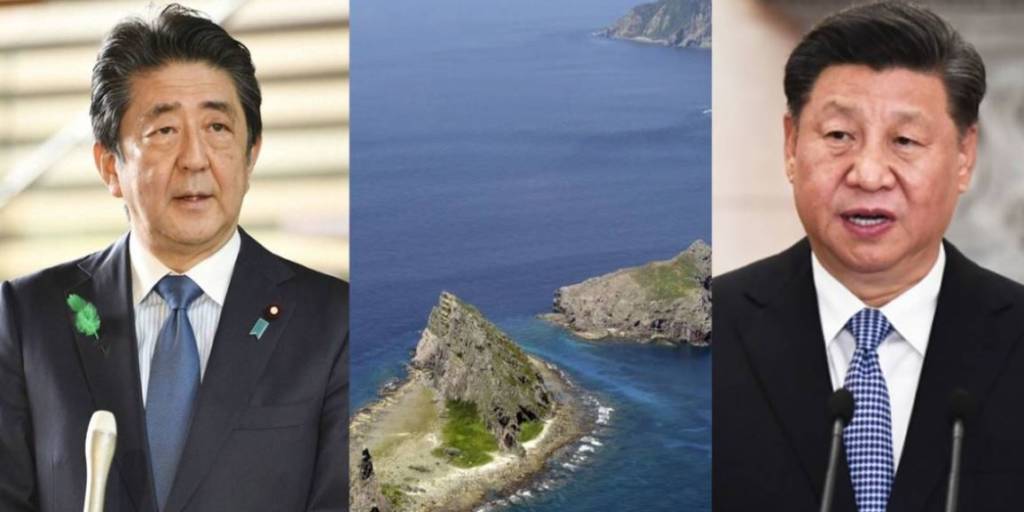China is embroiled in yet another dispute- this time with Japan, as the Ishigaki Municipal Assembly in Japan’s Okinawa prefecture has renamed an administrative chain that contains the Senkaku islands administered by Japan. This island chain is also claimed by China which calls them Diaoyu Islands. The Assembly has changed the name of the administrative area containing the Senkaku Islands from “Tonoshiro” to “Tonoshiro Senkaku.”
There is a locale in downtown Ishigaki which shares the same name “Tonoshiro”. Therefore, the Assembly says that the administrative area containing Senkaku islands have been renamed so as to avoid confusion. But in reality, Japan has tightened its grip on the disputed Islands by inserting the Japanese name “Senkaku” to counter the Chinese name Diaoyu.
The Japanese government has been administering the Islands since 1972. It also bought the Senkaku Islands from a private owner in 2012, but an expansionist Beijing continues to claim them. The Island group is situated 1,931 km Southwest of Tokyo. Ever since the Coronavirus Pandemic gripped the world in April, Chinese vessels have also been hovering around the disputed Senkaku Islands in the East China Sea.
Only last month, four Chinese Coastguard vessels entered the Japanese waters near the uninhabited Senkaku Islands and started chasing a Japanese fishing boat. But Japan confronted the Chinese vessels and warded them off with a warning.
Beijing itself admits having intruded into the Japanese waters and the Chinese Coastguard had stated that its vessels had “patrolled the territorial waters around the Diaoyu Islands.”
The Japanese move has triggered a sharp reaction from Beijing which has labelled the Island group its “inherent territories”. Threatening Japan, Beijing asked it to “abide by the spirit of the four-principle consensus, avoid creating new incidents on the Diaoyu Islands issue, and take practical actions to maintain the stability of the East China Sea situation”.
Even on the day when the Municipal Assembly approved the legislation changing the name of the uninhabited Islands, four Chinese vessels were sailing through the area.
However, the Ishigaki Mayor Yoshitaka Nakayama maintains that the move is “merely intended to streamline administrative work.”
The ties between China and Japan have already soured over Chinese transgressions in the East China Sea.
Recently, Japan deployed ballistic missiles near the maritime border with China. Tokyo has been bolstering its air defences, and is set to deploy the Patriot Pac-3 MSE Air Defense Missile System at four military bases this year. Currently, the Patriot PAC-3 has a maximum range of 70 kilometres which will be enhanced to 100 kilometres with the PAC-3 MSE.
There is growing anti-China sentiment in Japan for several reasons. Tokyo had invested heavily in the Olympic Games, a whopping $12.35 billion US dollars to be precise, but the Wuhan virus crushed Japan’s Olympic dream. Miffed by the role of the WHO under Dr Tedros, the Japanese Deputy Prime Minister went on to say that the World Health Organisation might have to change its name to “Chinese Health Organisation.”
Later on, the Shinzo Abe government earmarked 2.2 billion US dollars out of the 993 billion US dollars stimulus package, for helping Japanese manufacturers shift production out of China. This triggered an exodus of manufacturing companies out of China, in a severe jolt to the exports-based Chinese economy.
Moreover, Japanese Prime Minister Shinzo Abe also took the lead in issuing a G7 statement on Hong Kong. He even said, “Rightfully, the G7 bears the responsibility to lead the global opinion.”
Abe added, “That being said, Japan wants to take the lead in releasing a statement within the G7 (framework) about Hong Kong affairs based on the principle of ‘one country, two systems.”
China is also engaged in rising tensions with the United States, Japan’s key ally further complicating bilateral ties. Meanwhile, Tokyo also looks unlikely to fix a date for Chinese President Xi Jinping’s State visit to Japan. It seems that Abe is not too keen on meeting Xi Jinping.
What is also not lost on us is the fact that Japan’s move to rename the Island chain has come amidst soaring military tensions between India and China in Eastern Ladakh.
China is bullying all its maritime and land neighbours, apart from integrating the semi-Autonomous region of Hong Kong completely with the controversial National Security bill. Beijing’s revisionism is peaking because it feels that its neighbours are incapacitated by the pandemic.
China has already got such bad PR that it doesn’t care if it faces more backlash for bullying its neighbours. Japan fears China could do in the emerging flashpoint of Senkaku what it did in Eastern Ladakh.
If China crosses the dangerous red line, it will be in Senkaku Islands, and in fact 2018, a Nuclear-powered Submarine was also spotted near the uninhabited Islands. But Tokyo’s message to Beijing is loud and clear- ‘It is Senkaku, not Diaoyu.’
